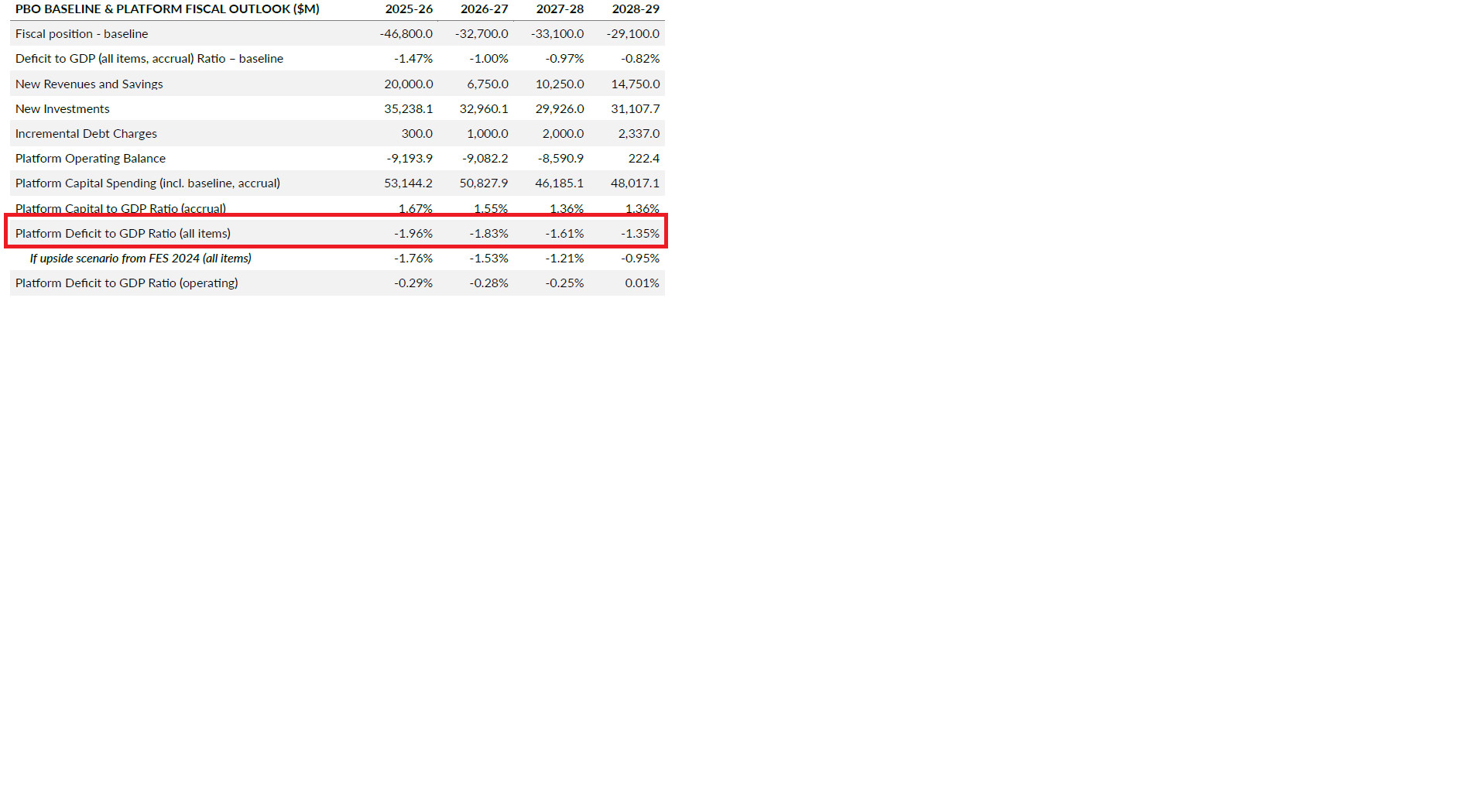4) Overall budget framework
The deficit comes in at <2% of GDP.
Their split into capital/operating shows a 0.01% operating surplus by yearr 4, so deficit is driven only by investments.
With nominal growth > nominal bond rates, a deficit in 1% to 2% range is consistent with long-run stability.
The deficit comes in at <2% of GDP.
Their split into capital/operating shows a 0.01% operating surplus by yearr 4, so deficit is driven only by investments.
With nominal growth > nominal bond rates, a deficit in 1% to 2% range is consistent with long-run stability.

Comments
A 1% to 2% deficit keeps debt/GDP about flat. That's the definition of sustainable.
It's way less the US deficit which is 7% of GDP and growing. *That's* not sustainable.
You might argue for decreasing debt/GDP to create fiscal room for a 'bad time'.
But....
What should be the fiscal goal now? For me, we are facing an epoch-defining shift in trade and international security.
If you're not going to invest in a new path, you're accepting the current path.
If anything, I think we should be investing more in the new path.
I've already seen some of the usual suspects freak out about a deficit in the range of 1% to 2% of GDP. At this point, if you're still setting your hair on fire about that either:
i) you can't math
ii) you're stuck in the 90s when i > g
iii) you're just a partisan.
1. The LPC platform would re-orient Canada in the face of epoch-defining US aggression.
2. Strength is focus on investment while aiming at fiscal sustainability.
3. Weakest parts are i) reliance on spending restraint to make numbers work ii) blowing $22B on a PIT tax cut.
📌